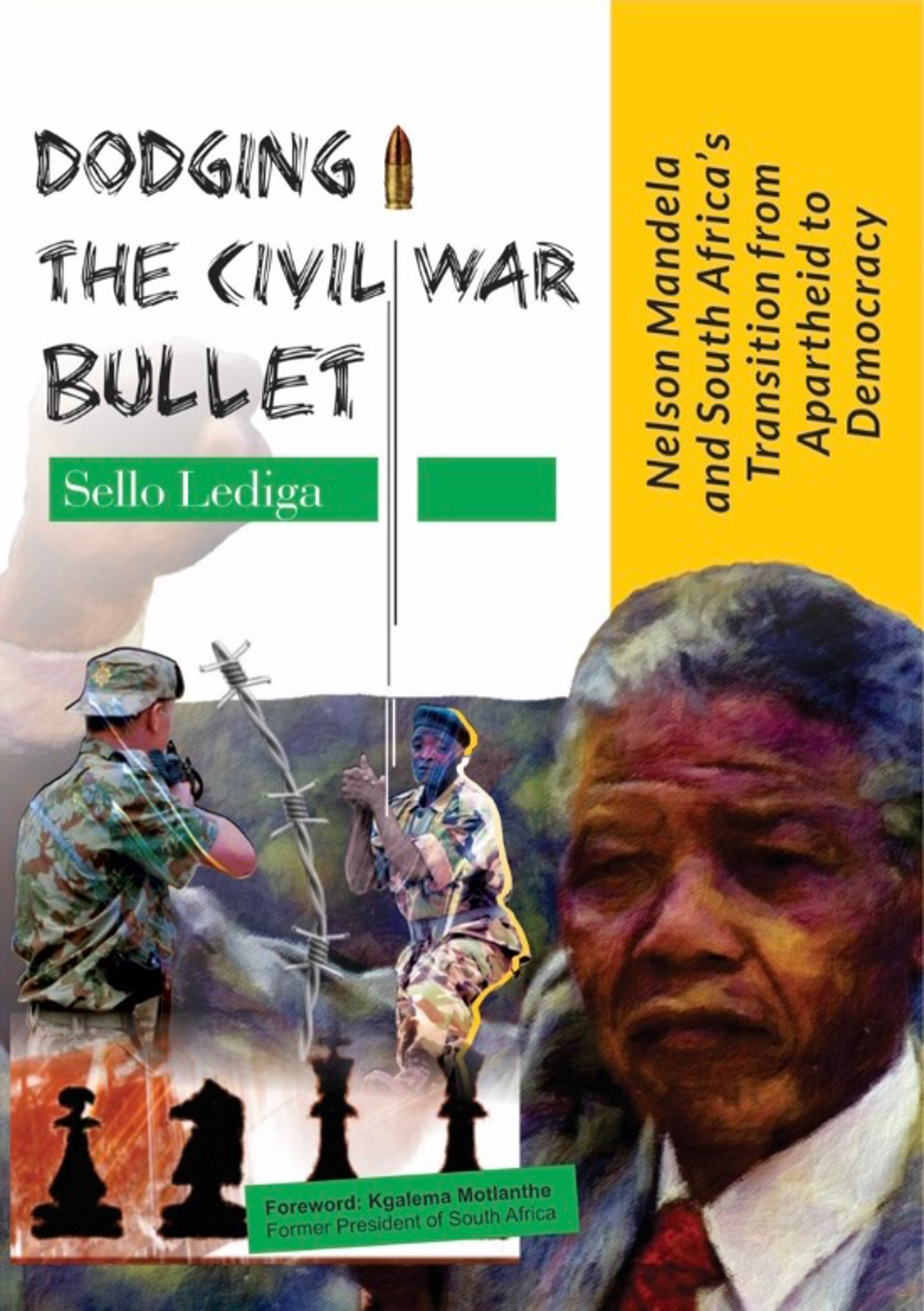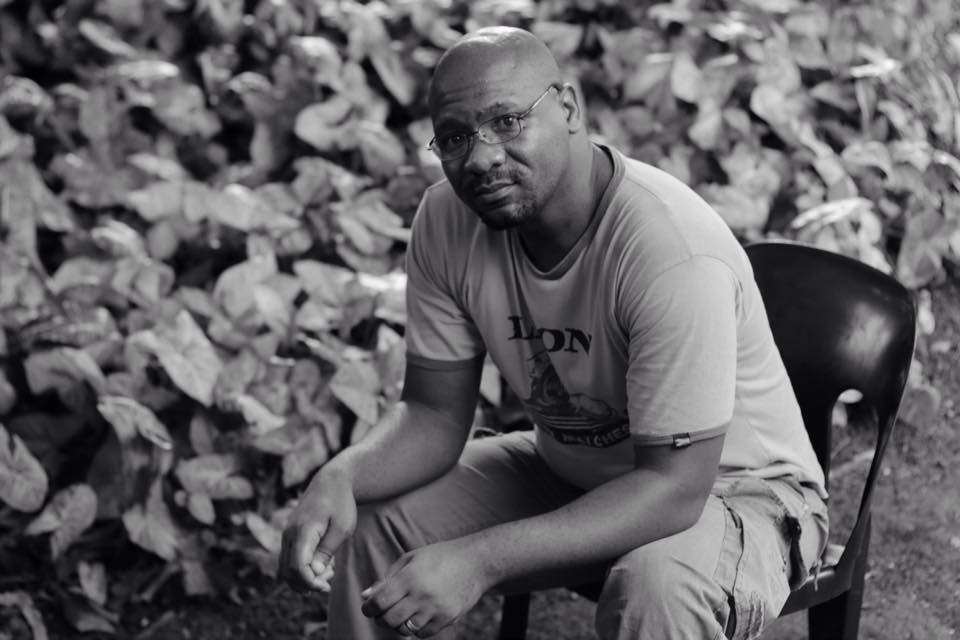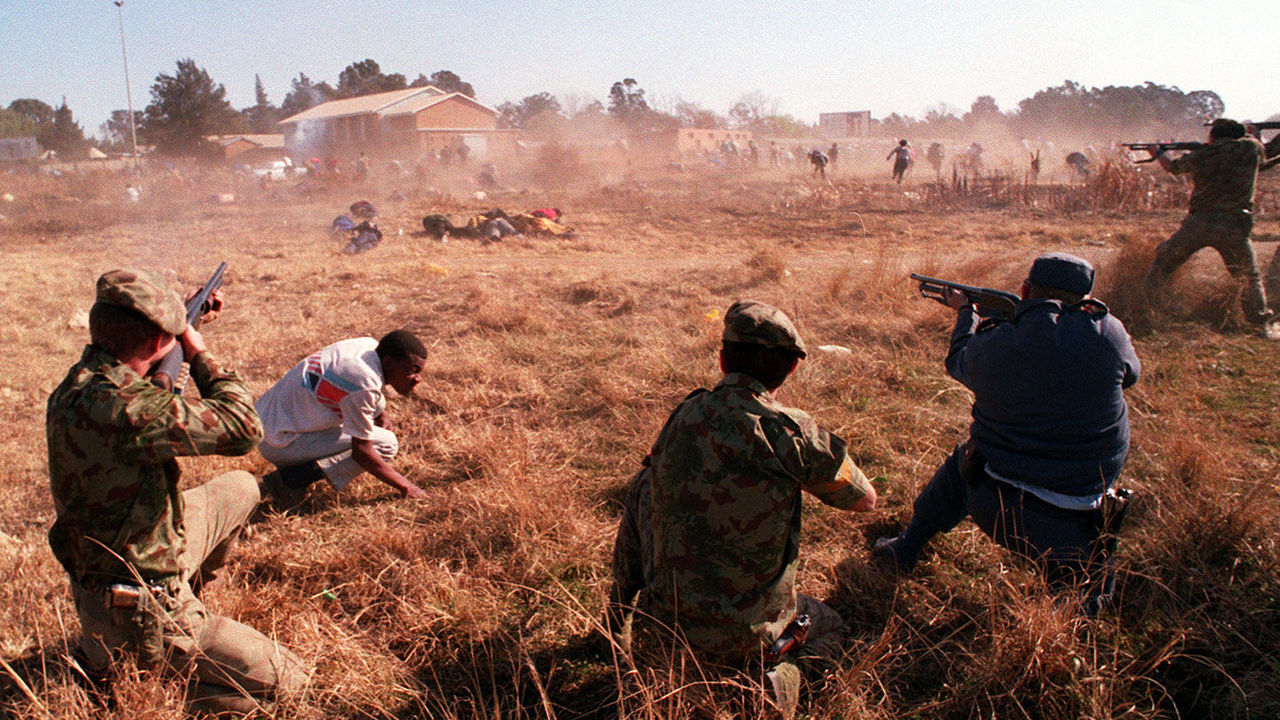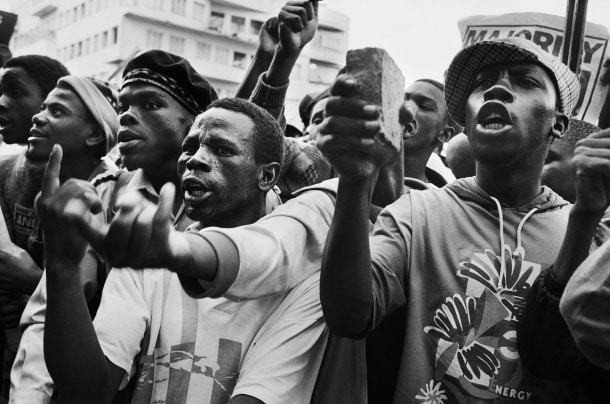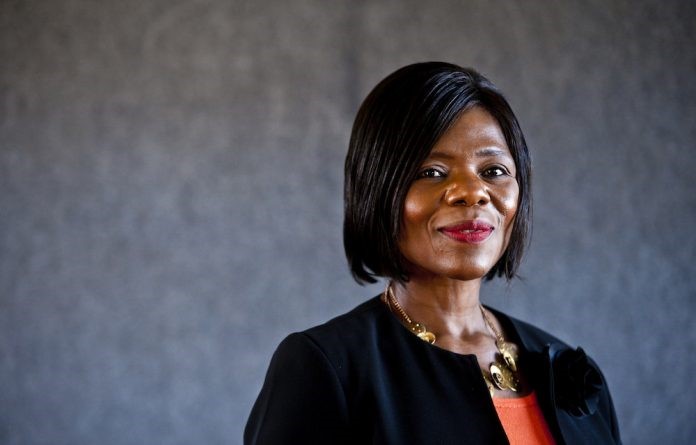The perception of South Africa's first democratic president, Nelson Rolihlahla Mandela, as a sell-out who bartered the freedom of his people at the hands of the ruling Apartheid government for his freedom, is a widely held belief in the popular political imagination of South Africans. This perception is particularly prevalent among those who were not yet born or were mere infants at the time when the anti-apartheid struggle was unfolding. It may also be common among those who have only heard disjointed accounts of how the negotiations for our country's transition took place.
"Dodging the Civil War Bullet" by Sello Lediga is an impeccable narrative that reads like a documentary flashback. It is suffused with accurate dates, names, and a robust sense of the socio-political atmosphere from the colonial-apartheid era of the 1600s until the 1990s. The book unpacks the domino effect of social engineering, first through colonialism and then through apartheid. It also delves into the organized resistance of the ANC's leadership and their commitment to resisting absolute subjugation through their policies and the power to self-organize.
However, this perception and the widely touted claim do not stand up to scrutiny when compared to the records and information that this book reveals. In one of the chapters, a National Intelligence Service (NIS) source from 1987 provides an analysis of the politics of that era, stating:
"South Africa finds itself in a dead-end street, both internationally and nationally. The only question is how it can extricate itself from this situation with a modicum of self-respect. The key lies in talking to Mandela and releasing political prisoners. He has become the international and national symbol of freedom and the evil of apartheid. Engaging with Mandela is the only way forward. Mandela is now South Africa's most influential and powerful leader. The real question is who should engage with him, when, and on what terms. Is this possible? What kind of process and by whom should be set in motion to bring about a negotiation table?"
The erroneous assumption that Nelson Mandela was at the mercy of the ruling Apartheid government upon entering the post-apartheid era is debunked by this book. It instead reveals the intricacies of the secret talks that paved the way for the Convention for a Democratic South Africa (CODESA) in the 1990s. Both sides had to create a favourable environment of mutual understanding, respect, and trust to prevent further bloodshed in the country, particularly if Umkhonto we Sizwe was compelled to resort to warfare.
Furthermore, Nelson Mandela was not always physically strong during his time leading the ANC's resistance. While serving time in Pollsmoor prison, he had to be admitted to Volks Hospital in Cape Town due to a prostate ailment. This is where two key figures, Winnie Madikizela Mandela and Margaret Thatcher, played a crucial role in efforts to bring both sides to the table. In South Africa, Winnie Madikizela Mandela, the former wife of the president and an anti-apartheid activist, met with the then National Party Justice Minister Kobie Coetzee to negotiate Mandela's hospital visit. Meanwhile, at the United Nations, Margaret Thatcher called out P.W. Botha and sought the support of the Commonwealth to help suspend violence in South Africa. The meeting with Coetzee was pivotal in establishing a connection between Botha and Mandela and the ANC leadership of the time.
This pivotal moment in 1985 marked a new wave that eased the tensions on both sides, especially within the National Intelligence Services, which had already proposed negotiations in 1984. It set the stage for more thoughtful and consistent talks, resulting in 15 meetings between the African National Congress and the National Party from 1985 to 1989.
In essence, this book emphasizes that it was not just coincidences, gnawing consciences, acts of kindness, and the conviction of an organized people standing up for their beliefs that moved South Africa toward negotiated democracy during the state of emergency. The detailed accounts and events in this book illustrate how Mandela did not sell out but rather held steadfast against the ruling Apartheid government, taking calculated measures, even if it meant going against the wishes of his comrades until the government and the combined forces had no choice but to release him and pave the way for the emancipation of black people.
This book, from the very beginning, debunks supposed well-known truths about the colonization of South Africa, clarifying that the Portuguese, rather than the Boers, were the first colonizers. It proceeds to unfold the layers of truth about the apartheid resistance struggle, providing a vivid and detailed account with specific dates. It goes on to reveal the two sets of secret talks that led to Mandela's release from prison.
Furthermore, the book extensively examines the evolution of policies, parliamentary acts, and administrative decrees that gave the National Party government an upper hand in controlling the movements of the oppressed black majority. It covers various acts, including the Native Land Act (1913), the Asiatic Land Tenure Bill (1946), the Group Areas Act (1950), and the Native Labour Regulation Act (1953).
The book also underscores the power of self-organization. It follows a path that highlights the sacrifices of the founders of the ruling party and their founding principles. It eloquently demonstrates the extraordinary ability of people to organize themselves with sophistication and complexity, akin to an ant colony. This is particularly evident during a state of emergency, where various black civil groups, such as church groups, student groups, parenting groups, and trade and business groups, coordinated their efforts to apply pressure on the ruling party. This collective action played a crucial role in making the state ungovernable, ultimately leading to the creation of a rainbow nation.
Overall, the book provides a comprehensive account of South Africa's transformation, supported by detailed times, dates, and events. It convincingly shows that Nelson Mandela did not sell out, but rather stood firm against the apartheid government, and that the path to freedom was paved by careful negotiations and the sacrifices of many individuals and groups.
About the author (as written in the blurb of the book):
Mr Sello Lediga is a South African writer, historian and social activist. After graduating in education, English and history at the University of Limpopo, he also obtained an honours degree in history at the same institution.
He spent most of his professional life, in the field of education, as a lecturer and a post-apartheid director of education in the province of Limpopo, South Africa. He resigned from the public service in 1999 to pursue a career in business and writing. A lifelong activist, Lediga was also a student leader in the 1980s after joining the Azanian Student Organisation (AZASO) at the University of the North (now Limpopo) and served as correspondence Secretary of the student representative council (SRC) in 1983/84. After graduating he played a leadership role in the trade union movement and was a founding member of the South African Democratic Democratic Teachers Union (SADTU). He is also involved in the post-apartheid civil society movement in South Africa.
Before the publication of this book, he published two books respectively: Ndizani Bafana (2004) and Tender and the Fall of Limpopo (2015). He has been a political commentator and columnist for over 17 years.

